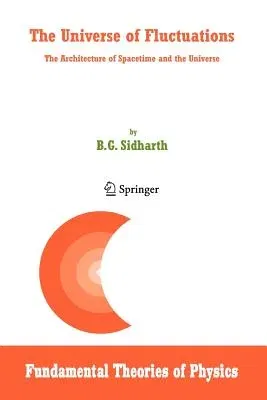1: THE UNIFICATION PARADIGM. PREFACE. 1.1 Introduction. 1.2 Inertial
Mass. 1.3 Enter General Relativity. 1.4 Further Considerations. 1.5
Prospect. 2: STANDARD MODELS OF PHYSICS AND COSMOLOGY. 2.1 The Strong
and Weak Interactions. 2.2 Gauge Fields. 2.3 Standard Cosmology. 3:
DIFFERENT APPROACHES: QUANTUM SUPERSTRINGS AND QUANTUM GRAVITY. 3.1
String Theory. 3.2 Loop Quantum Gravity. 4: OTHER APPROACHES. 4.1
Introduction. 4.2 Quantum General Relativity. 4.3 Scale Relativity. 4.4
Cantorian Spacetime. 5: FUZZY SPACETIME AND THE PLANCK SCALE. 5.1 The
Origins of Fuzzy Spacetime. 5.2 Further Considerations. 5.3 Quantum
Geometry. 5.4 The Unification of Gravitation and Electromagnetism. 5.5
The Planck Scale. 5.6 The Universe as Planck Oscillators. 5.7 Modelling
Fuzzy Spacetime as a Double Wiener Process. 5.8 Other Issues. 6: THE
UNIVERSE OF FLUCTUATIONS. 6.1 The 'Old' Cosmology. 6.2 Dark Energy and
Fluctuations. 6.3 Issues and Ramifications. 6.4 The Nature of Spacetime.
6.5 Further Considerations. 6.6 A Final Comment. 7: QUANTUM GEOMETRY.
7.1 Introduction. 7.2 A Gauge like Formulation. 7.3 Gauge Fields. 7.4
Quantum Geometry. 8: HOW FUNDAMENTAL IS GRAVITATION? 8.1 Introduction.
8.2 Interrelationships. 8.3 Comments. 8.4 Gravitation as Weak
Electromagnetism. 9: THE ELUSIVE MASS SPECTRUM. 10: EXPERIMENTAL
EFFECTS. 10.1 Introduction. 10.2 Modified Dispersion. 10.3 Particle
Behaviour. 10.4 A New Short Range Force. 10.5 Gravitational Effects.
10.6 Bosons as Bound States of Fermions. 10.7 Can We Harness the Zero
Point Field? 10.8 Retrospect. REFERENCES. INDEX


